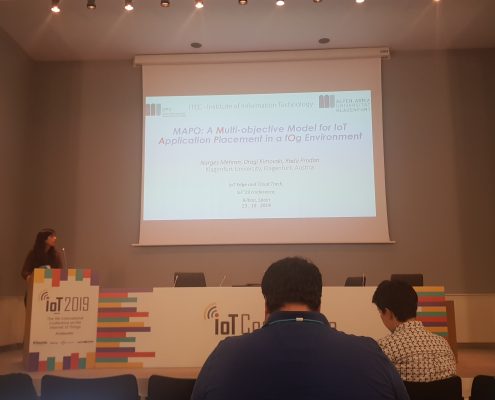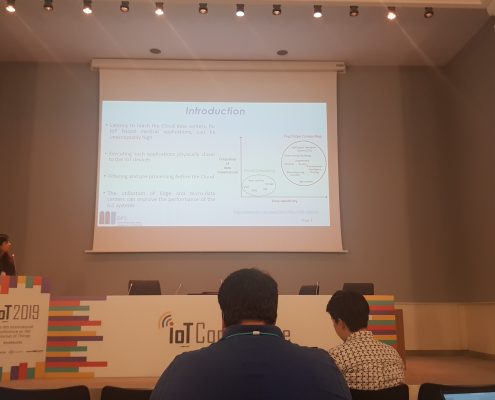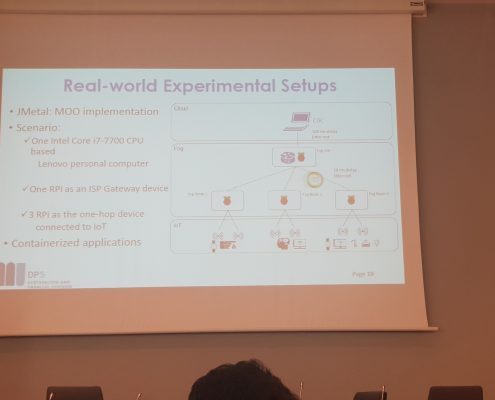Narges Mehran presented the paper “MAPO: A Multi-Objective Model for IoT Application Placement in a Fog Environment” at the 9th International Conference on the Internet of Things, IoT 2019 in Bilbao, Spain (October 22-25, 2019).
Authors: Narges Mehran, Dragi Kimovski, Radu Prodan (Alpen-Adria Universität Klagenfurt).
Abstract: The emergence of the Fog computing paradigm that leverages in-network virtualized resources raises important challenges in terms of resource and IoT application management in a heterogeneous environment with limited computing resources. In this work, we propose a novel Pareto-based approach for application placement close to the data sources called Multi-objective IoT Application Placement in fOg (MAPO). MAPO models applications based on a finite state machine using three conflicting optimization objectives, completion time, energy consumption, and economic cost, and considering both the computation and communication aspects. In contrast to existing solutions that optimize a single objective, MAPO enables multi-objective energy and cost-aware application placement. To evaluate the quality of the MAPO placements, we created both simulated and real-world testbeds tailored for a set of medical IoT application case studies. Compared to the state-of-the-art approaches, MAPO reduces the economic cost by 28%, while decreasing the energy requirements by 29-64% on average, and improves the completion time by a factor of six.
Track: IoT Edge and Cloud @IoT’19
Acknowledgement: Austrian Research Promotion Agency (FFG), project 848448, Tiroler Cloud, funded this work.





